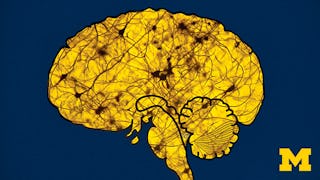This course is geared towards starting undergraduate students. A solid background in biology will be helpful but not absolutely essential. The material will be of interest to those who are pursuing a career in any of the life sciences as well as anyone who has run up against their biological clock.


(230 reviews)
Skills you'll gain
Details to know

Add to your LinkedIn profile
See how employees at top companies are mastering in-demand skills

There are 6 modules in this course
Introduction to 'chronobiology'. What sorts of rhythms are observed in nature? Most of the lecture will be spent on describing daily or circadian rhythms in organisms from bacteria to man.
What's included
9 videos1 reading2 assignments
Circadian rhythms synchronise to the 24-hour environment. Organisms use specialised photoreceptors to do this and they display characteristic properties in this process. We experience this active synchronisation process for example when we suffer from jet lag!
What's included
5 videos3 readings1 assignment
We will discuss the elaborate molecular mechanisms that allow circadian clocks to produce their daily rhythms and to synchronise them to its environment. We will compare these mechanisms in a wide range of organisms.
What's included
8 videos1 reading1 assignment
Circadian clocks serve to orchestrate physiology and metabolism in a coordinated way over the course of the day. Therefore, practically all processes in an organism are regulated outputs of the clock. We'll discuss examples of these processes and ideas about how this circadian regulation works.
What's included
8 videos1 reading1 assignment
With the appreciation of the clock’s global control, we proceed to discussing how much this temporal programme controls our lives from birth to death and how much we mistreat the circadian clock in modern life.
What's included
6 videos1 reading1 assignment
Finally, we will look at the clock’s relationship to pathology. What are the consequences of living against the clock, what happens if the clock ‘breaks’, and how can we use our knowledge about the circadian system in medical diagnosis and therapy.
What's included
11 videos3 assignments1 peer review
Instructors


Explore more from Basic Science
 Status: Preview
Status: PreviewUniversity of North Texas
 Status: Preview
Status: PreviewEindhoven University of Technology
 Status: Preview
Status: PreviewEindhoven University of Technology
 Status: Preview
Status: PreviewUniversity of Michigan
Why people choose Coursera for their career




Learner reviews
230 reviews
- 5 stars
85.65%
- 4 stars
11.30%
- 3 stars
2.17%
- 2 stars
0%
- 1 star
0.86%
Showing 3 of 230
Reviewed on Aug 29, 2022
Very interesting course with good instructors explaining the content
Reviewed on Jul 13, 2021
Fanatastic course. Dr. Till and Dr. Martha were excellent in explaining in details. I learned a lot about circadian clocks, it will be very much helpful for my academics.
Reviewed on Oct 24, 2019
The course is very organized and interesting. I learned a lot about the basics of circadian rhythm, It is very useful for the beginners and for all biological fields.

Open new doors with Coursera Plus
Unlimited access to 10,000+ world-class courses, hands-on projects, and job-ready certificate programs - all included in your subscription
Advance your career with an online degree
Earn a degree from world-class universities - 100% online
Join over 3,400 global companies that choose Coursera for Business
Upskill your employees to excel in the digital economy
Frequently asked questions
To access the course materials, assignments and to earn a Certificate, you will need to purchase the Certificate experience when you enroll in a course. You can try a Free Trial instead, or apply for Financial Aid. The course may offer 'Full Course, No Certificate' instead. This option lets you see all course materials, submit required assessments, and get a final grade. This also means that you will not be able to purchase a Certificate experience.
When you purchase a Certificate you get access to all course materials, including graded assignments. Upon completing the course, your electronic Certificate will be added to your Accomplishments page - from there, you can print your Certificate or add it to your LinkedIn profile.
Yes. In select learning programs, you can apply for financial aid or a scholarship if you can’t afford the enrollment fee. If fin aid or scholarship is available for your learning program selection, you’ll find a link to apply on the description page.
More questions
Financial aid available,
¹ Some assignments in this course are AI-graded. For these assignments, your data will be used in accordance with Coursera's Privacy Notice.

